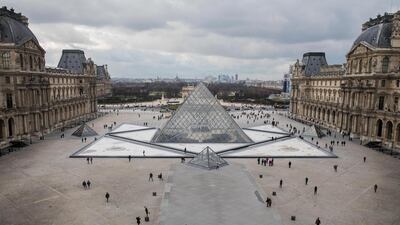When it comes to finding the Mona Lisa among the Musee du Louvre's 70,000 square metres of galleries and 38,000 works of art, visitors are presented with two options.
But those who take the advice of the museum's guides follow a more circuitous route that takes in one of the Louvre's other great ladies, the Venus de Milo, and passes through the grand 17th- century Pavilion de l'Horologe (Clock Pavilion).
It includes displays dedicated to the museum's research and conservation projects, including a 1,700-year-old pair of sandals from Egypt, and loans and new acquisitions such as Reading the Bible, a painting by the French 18th-century artist Jean-Baptiste Greuze.

